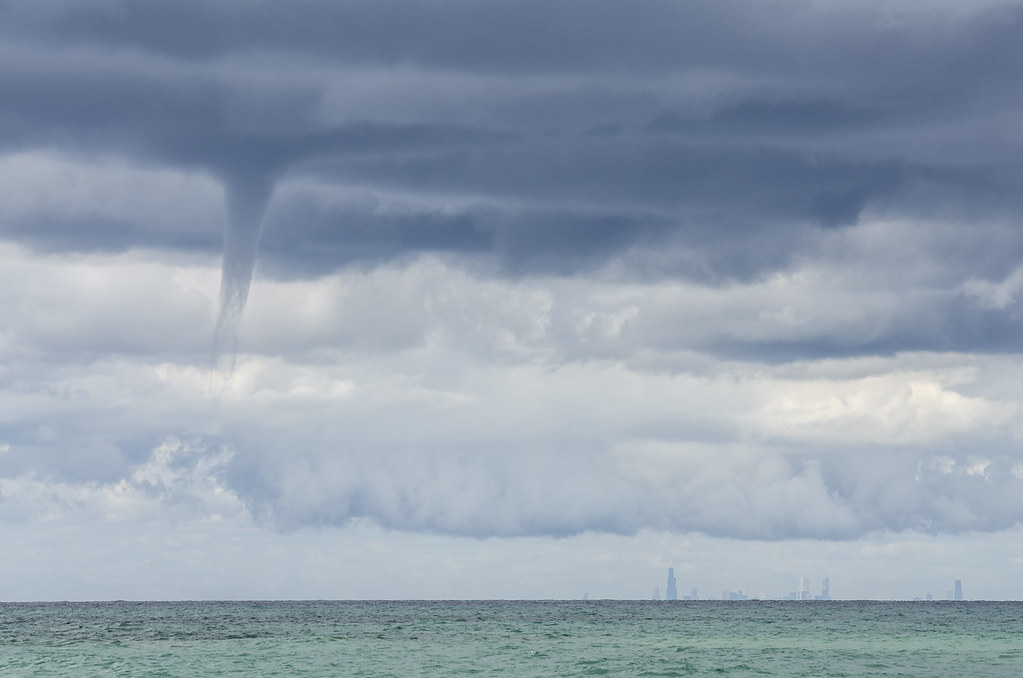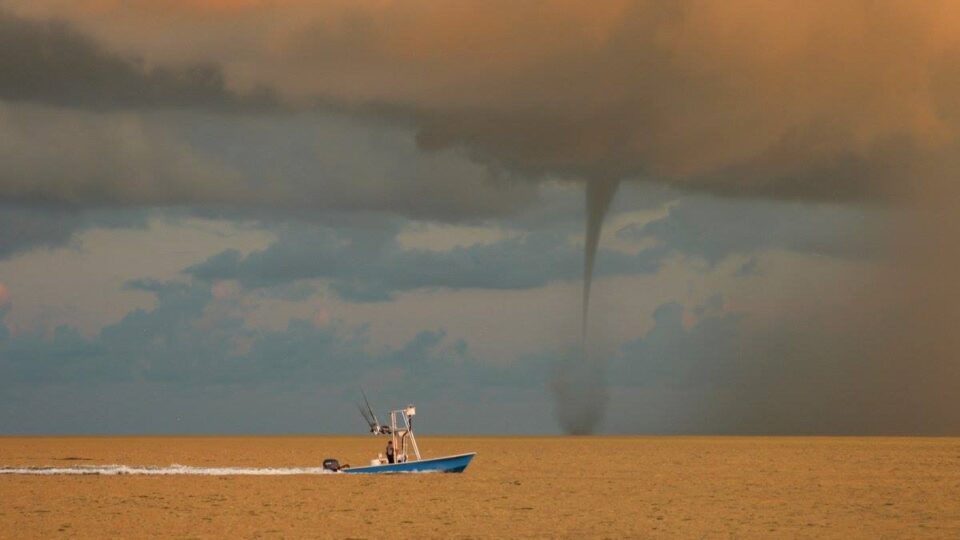Are Waterspouts Dangerous to Boats?
Waterspouts can be scary and intimidating even to the most experienced sailors when they spot them at sea. They are not as dangerous as their land-based counterparts; however, waterspouts can be dangerous to boats, and in this article, we will delve into that.
What is a Waterspout?
A waterspout is a natural phenomenon that occurs on the surface of an ocean or sea. It can be described as a vortex that spins down from a cloud to the surface of an ocean. It can also be described as a column or vortex of water and mist formed by a whirlwind occurring over the sea or body of water. Waterspouts are commonly found in tropical and subtropical waters such as the Florida Keys, the Greek Islands, and off the east coast of Australia. However, it is not uncommon to see them in other areas due to nature’s complexity. A waterspout can be further classified into two categories which are the fair-weather waterspouts and the tornadic waterspouts.
What is a fair-weather waterspout? A fair-weather waterspout is a whirlwind that forms beneath a cumulus cloud and over water. A key determinant factor is that it is not generally associated with thunderstorms. Most fair-weather waterspouts tend to form in light wind conditions, so they tend to stay in one place. Another feature of the fair-weather waterspout is that it develops from the water’s surface and moves upwards towards the clouds and its effects on the surrounding environment are always minimal.

>>Also Read: Is Sailing Dangerous?
What is a Tornadic Waterspout?
According to the NOAA’s National Weather Service, a tornadic waterspout is described as “Tornadoes that form over water or move from land to water. They have the same characteristics as a land tornado. They are associated with severe thunderstorms and are often accompanied with high winds and seas, large hail, and frequent dangerous lightning”. In other words, a tornadic waterspout and its effects on the surrounding environment are significant as compared to the fair-weather waterspout.
A waterspout (especially a tornadic waterspout), despite its mesmerizing appearance, is dangerous to boats and must be avoided when encountered at sea. This is not common to both types of waterspouts. A fair-weather waterspout has less effect on the environment and, therefore, in most cases, has little or no effect. It can even be admired due to its alluring nature. However, the reverse is the case for tornadic waterspout that comes with a destructive force that can deal damage to a boat and its occupant.
A Tornadic Waterspout is Dangerous to a Boat and its Occupants Due to the Following Factors:
High Possibility of Capsizing
A tornadic waterspout is characterized by high winds, which gives an effect like a “tornado,” as the name suggests. Due to this factor, an unstable environment is created. The ocean and seas are closely linked with atmospheric conditions, so a change in the surrounding weather can easily affect these water bodies. By implication, a tornadic waterspout can cause situations like a heavy storm that can damage a boat and its occupant if one is not careful. The situation can be fatal if the boat in question is a small boat that relies heavily on winds (sailboat) for movements. The wind can damage the sail and cause the boat to capsize, thereby damaging the boat and putting the life of the boat’s occupants at risk. When a tornadic waterspout is sighted, it is expedient that the boat be steered towards a different direction.
Waterspouts develop from noon, and they go through different stages until they mature into full-fledged waterspouts. They start as a dark mini spot on the water, which cannot be easily discovered from a sailboat. After this stage, they begin to manifest on the surface of the water. If you are not careful and are caught in a waterspout at that stage, depending on the level of the waterspout and the size of the boat, capsizing the boat is possible.
Lightning and Hailstorm
A tornadic waterspout is a natural phenomenon that can be accompanied by other phenomena. It is not uncommon to find a tornadic waterspout accompanied by a thunderstorm that can deal heavy damage to an area it affects and a boat if it is in that area. Thunderstorms and lightning work hand-in-hand, so one can’t operate without the other. What is lightning? Lightning is an electrical discharge caused by an imbalance between the clouds and the ground or within the clouds themselves. Lightning is extremely hot, and it can cause the air and atmosphere around to expand due to this heat. This process causes “thunder” to occur.
Lightnings
Lightning is a very large electrical current that occurs within a short period and can deal major damage to a boat due to its powerful and heated feature. Even with a lightning catcher, it can still have a destructive effect on a boat. If your boat is unprotected, then it is a suicidal attempt. This is because lightning can vaporize sections of a boat, destroy electrical power with its source, deal damage to navigation systems necessary for directions, blow a hole at the bottom, thereby causing a leak to occur, which can cause the boat to sink. Due to its heated nature, lightning can cause fires to start, which can lead to the loss of lives and important properties on the boat.
Hailstorms
Hailstorms are also another natural phenomenon that can accompany a tornadic waterspout. A hailstorm is an unusual phenomenon in which balls of ice, called hail, fall from the sky. These ice balls that fall from the sky are nothing more than precipitations that will form under certain conditions. How is ‘hail’ formed? Hail is formed at high altitudes within massive clouds when supercooled water droplets adhere to each other and form layers of ice. Hail sizes range from as small as peas to as large as softballs.
What makes hailstorms dangerous is the speed at which these hails fall. These speeds can cause damage. Hailstones in a severe thunderstorm which usually has a diameter of 1 inch to 1.75 inches, can fall at speeds between the range of 25 (Twenty-five) to 42 (forty-two) mph. Hailstorms at these speeds can cause damage to various parts of the boats, such as damage to electronics and equipment, especially if the hail is accompanied by lightning which gives it more force.
It can cause a tear in the sails and damage upholstery and other parts. Sometimes, a hailstone can strike a person on a boat and render the person unconscious. This can be very dangerous if only one occupant is on the boat because the person can die from different circumstances. For example, if it is major damage that was dealt to the head, it can lead to internal bleeding (hemorrhage), resulting in death. It is also possible for the boat to capsize during a storm. When this happens, the unconscious person may die from drowning or cold, depending on the circumstances.

>>Also Read: Is It Dangerous to Sail Around the World?
Destructive Effect
One thing most tornadic waterspouts are usually associated with is destruction. Due to the high winds and storms, lightning, and other factors create, they deal major damage to water vessels and cause wreckage. The average speed of a waterspout wind is approximately 50 (fifty) mph (80 kph). However, they can reach as high as 150 (one hundred and fifty) mph (241 kph), and they can travel at speeds of anywhere from one to 80 (eighty) mph (128 kph). The diameter of a waterspout vortex can range from a few yards to 110 (a hundred and ten) yards (100m). Winds at such speeds can deal damage to a boat and wreck it, possibly in some such situations. When this happens, occupants of the boat are exposed to risky situations.
Are Waterspouts Dangerous to Boats? – Final Thoughts
A waterspout generally is a mesmerizing and appealing natural phenomenon; however, it is advisable for boaters going on an expedition to steer clear of them due to its destructive nature. Sailors must be alert to notice certain changes in the environment that can cause damage to the boat and their lives. So, Yes Waterspours are Dangerous to Boats.
